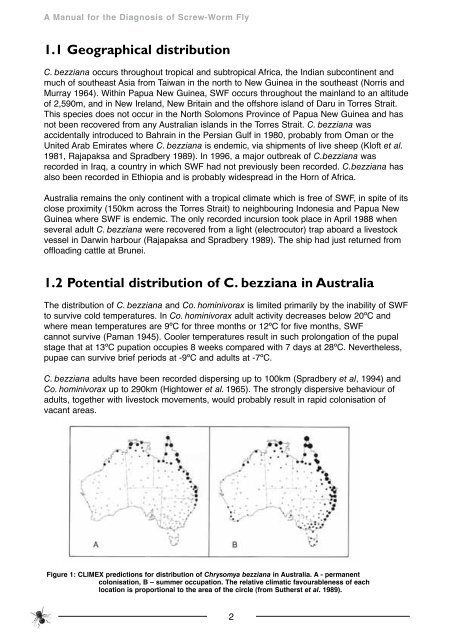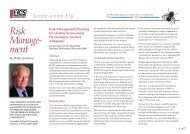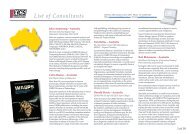Manual for Diagnosis of Screw-worm Fly - xcs consulting
Manual for Diagnosis of Screw-worm Fly - xcs consulting
Manual for Diagnosis of Screw-worm Fly - xcs consulting
You also want an ePaper? Increase the reach of your titles
YUMPU automatically turns print PDFs into web optimized ePapers that Google loves.
A <strong>Manual</strong> <strong>for</strong> the <strong>Diagnosis</strong> <strong>of</strong> <strong>Screw</strong>-Worm <strong>Fly</strong><br />
1.1 Geographical distribution<br />
C. bezziana occurs throughout tropical and subtropical Africa, the Indian subcontinent and<br />
much <strong>of</strong> southeast Asia from Taiwan in the north to New Guinea in the southeast (Norris and<br />
Murray 1964). Within Papua New Guinea, SWF occurs throughout the mainland to an altitude<br />
<strong>of</strong> 2,590m, and in New Ireland, New Britain and the <strong>of</strong>fshore island <strong>of</strong> Daru in Torres Strait.<br />
This species does not occur in the North Solomons Province <strong>of</strong> Papua New Guinea and has<br />
not been recovered from any Australian islands in the Torres Strait. C. bezziana was<br />
accidentally introduced to Bahrain in the Persian Gulf in 1980, probably from Oman or the<br />
United Arab Emirates where C. bezziana is endemic, via shipments <strong>of</strong> live sheep (Kl<strong>of</strong>t et al.<br />
1981, Rajapaksa and Spradbery 1989). In 1996, a major outbreak <strong>of</strong> C.bezziana was<br />
recorded in Iraq, a country in which SWF had not previously been recorded. C.bezziana has<br />
also been recorded in Ethiopia and is probably widespread in the Horn <strong>of</strong> Africa.<br />
Australia remains the only continent with a tropical climate which is free <strong>of</strong> SWF, in spite <strong>of</strong> its<br />
close proximity (150km across the Torres Strait) to neighbouring Indonesia and Papua New<br />
Guinea where SWF is endemic. The only recorded incursion took place in April 1988 when<br />
several adult C. bezziana were recovered from a light (electrocutor) trap aboard a livestock<br />
vessel in Darwin harbour (Rajapaksa and Spradbery 1989). The ship had just returned from<br />
<strong>of</strong>floading cattle at Brunei.<br />
1.2 Potential distribution <strong>of</strong> C. bezziana in Australia<br />
The distribution <strong>of</strong> C. bezziana and Co. hominivorax is limited primarily by the inability <strong>of</strong> SWF<br />
to survive cold temperatures. In Co. hominivorax adult activity decreases below 20ºC and<br />
where mean temperatures are 9ºC <strong>for</strong> three months or 12ºC <strong>for</strong> five months, SWF<br />
cannot survive (Paman 1945). Cooler temperatures result in such prolongation <strong>of</strong> the pupal<br />
stage that at 13ºC pupation occupies 8 weeks compared with 7 days at 28ºC. Nevertheless,<br />
pupae can survive brief periods at -9ºC and adults at -7ºC.<br />
C. bezziana adults have been recorded dispersing up to 100km (Spradbery et al, 1994) and<br />
Co. hominivorax up to 290km (Hightower et al. 1965). The strongly dispersive behaviour <strong>of</strong><br />
adults, together with livestock movements, would probably result in rapid colonisation <strong>of</strong><br />
vacant areas.<br />
Figure 1: CLIMEX predictions <strong>for</strong> distribution <strong>of</strong> Chrysomya bezziana in Australia. A - permanent<br />
colonisation, B – summer occupation. The relative climatic favourableness <strong>of</strong> each<br />
location is proportional to the area <strong>of</strong> the circle (from Sutherst et al. 1989).<br />
2




